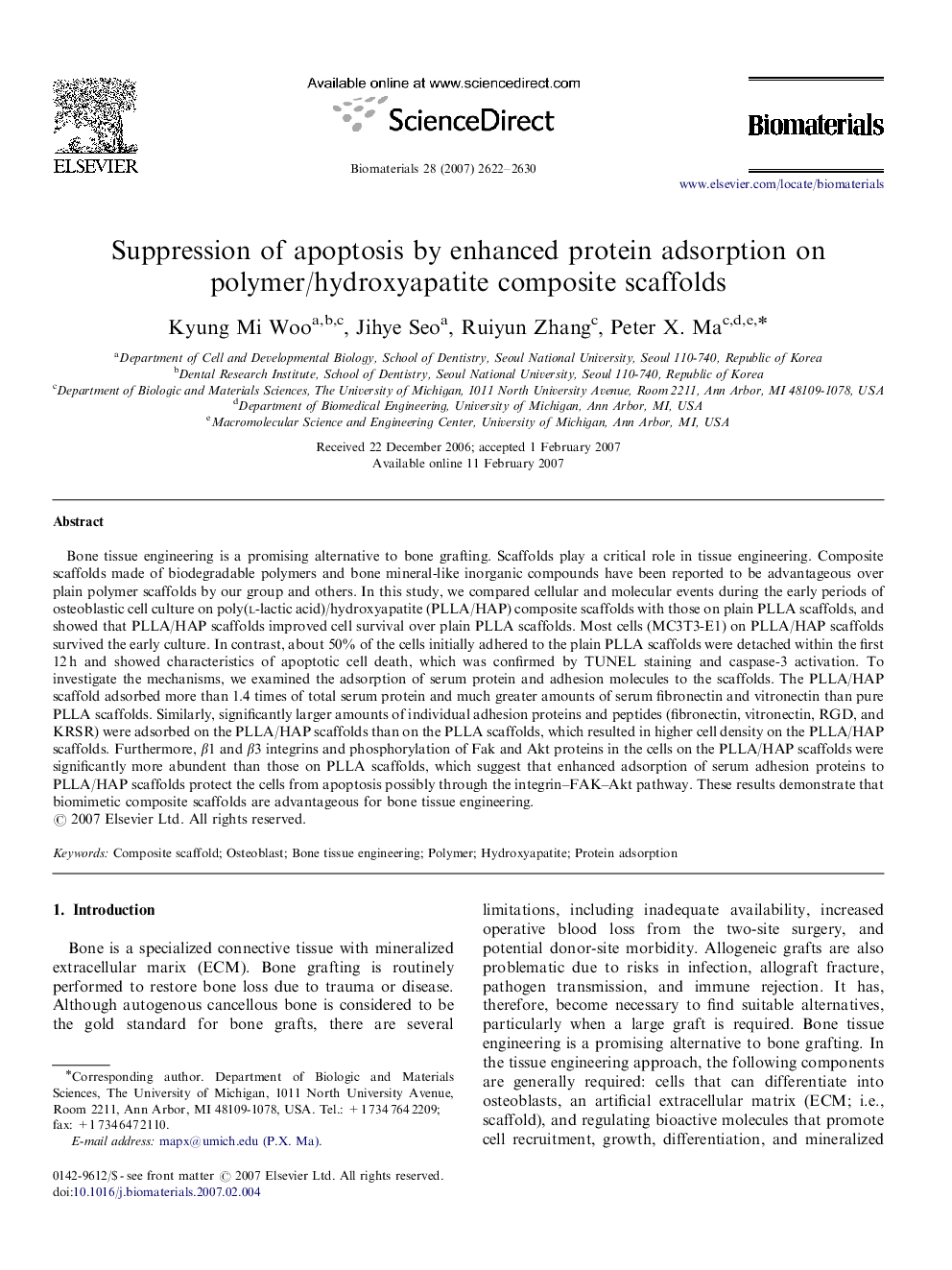| Article ID | Journal | Published Year | Pages | File Type |
|---|---|---|---|---|
| 10071 | Biomaterials | 2007 | 9 Pages |
Bone tissue engineering is a promising alternative to bone grafting. Scaffolds play a critical role in tissue engineering. Composite scaffolds made of biodegradable polymers and bone mineral-like inorganic compounds have been reported to be advantageous over plain polymer scaffolds by our group and others. In this study, we compared cellular and molecular events during the early periods of osteoblastic cell culture on poly(l-lactic acid)/hydroxyapatite (PLLA/HAP) composite scaffolds with those on plain PLLA scaffolds, and showed that PLLA/HAP scaffolds improved cell survival over plain PLLA scaffolds. Most cells (MC3T3-E1) on PLLA/HAP scaffolds survived the early culture. In contrast, about 50% of the cells initially adhered to the plain PLLA scaffolds were detached within the first 12 h and showed characteristics of apoptotic cell death, which was confirmed by TUNEL staining and caspase-3 activation. To investigate the mechanisms, we examined the adsorption of serum protein and adhesion molecules to the scaffolds. The PLLA/HAP scaffold adsorbed more than 1.4 times of total serum protein and much greater amounts of serum fibronectin and vitronectin than pure PLLA scaffolds. Similarly, significantly larger amounts of individual adhesion proteins and peptides (fibronectin, vitronectin, RGD, and KRSR) were adsorbed on the PLLA/HAP scaffolds than on the PLLA scaffolds, which resulted in higher cell density on the PLLA/HAP scaffolds. Furthermore, β1 and β3 integrins and phosphorylation of Fak and Akt proteins in the cells on the PLLA/HAP scaffolds were significantly more abundent than those on PLLA scaffolds, which suggest that enhanced adsorption of serum adhesion proteins to PLLA/HAP scaffolds protect the cells from apoptosis possibly through the integrin–FAK–Akt pathway. These results demonstrate that biomimetic composite scaffolds are advantageous for bone tissue engineering.
